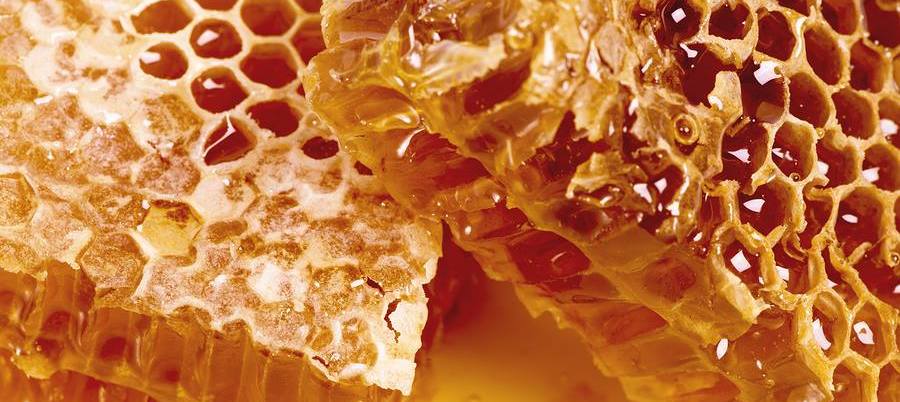Honey - A sweetener your Liver can appreciate Saturday 8th Oct, 2016
Honey – A Sweetener Your Liver Can Appreciate
Honey is usually lumped into the super sweet and not-very-good-for-you category, leaving some of its liver-protective properties underappreciated. Understandably, those with certain health conditions are advised to avoid or limit their honey intake, but this natural liquid is one of the few sweeteners that have the capacity to actually support the liver’s well-being.
Honey’s Origins
The process of creating honey is nothing short of amazing. The following sequential events describe honey’s creation. It all begins when bees feast on flowers’ nectar. The nectar collected by the bees mixes with special enzymes in their saliva, turning the flowers’ juices into honey. The bees carry this honey back to their hive where they deposit it into the cells of the hive’s walls. The fluttering of the bees’ wings provides the necessary ventilation to reduce the moisture’s content, making the honey ready for consumption. About 60,000 bees in a beehive may collectively travel as much as 55,000 miles and visit more than two million flowers to gather enough nectar to make just a pound of honey.
Honey’s Nutritional Profile
Despite its relative simplicity, honey contains a fascinating complex of natural sugars, trace enzymes, antioxidants, minerals, vitamins and amino acids. Honey’s composition is roughly:
17.1 percent water
82.4 percent total carbohydrates
.5 percent proteins, amino acids, vitamins and minerals
Honey’s average carbohydrate content is:
38.5 percent fructose
31 percent glucose
12.9 percent maltose, sucrose and other sugars
Just as the color and flavor of honey varies by floral source, so does the vitamin, mineral, antioxidant and amino acid content. Vitamins may include: Niacin, Riboflavin, Pantothenic acid
Minerals may include:
Calcium, Copper, Iron, Magnesium, Manganese, Phosphorus, Potassium & Zinc.
Besides sugars, vitamins and minerals, honey is loaded with polyphenols that act as antioxidants – substances that neutralize harmful free radicals in the body. Free radicals are formed through normal metabolic processes that are known to worsen many diseases, including chronic liver disease. The antioxidant content of different types of honey can vary up to 20-fold. In general, darker honeys like Buckwheat honey have more antioxidants than the lighter varieties.
Potential Liver Benefits
A real, not chemically manufactured, food that has been valued throughout history, honey has been associated with improved liver health and a reduced risk of liver disease.
Blood Sugar Control – In certain individuals, honey may help promote better blood sugar control – which is desirable for those in danger of fatty liver disease. Containing a nearly 1:1 ratio of fructose to glucose appears to be responsible for honey’s role of providing adequate glycogen storage in liver cells. Insufficient glycogen storage in the liver causes a release of stress hormones which, over time, impairs glucose metabolism. Impaired glucose metabolism inevitably leads to insulin resistance and can be at the root of fatty liver disease.
Good Bacteria – The digestive system hosts friendly bacteria, inhabitants that are crucial for healthy digestion. Proving to be a rich source of good bacteria, raw honey has been documented to contain six species of lactobacilli and 4 species of bifidobacteria. Researchers believe that liver injury often correlates with an imbalance of gut bacteria, and the liver is more resistant to damage when good bacteria levels are high.
Antioxidant Power – Known to contain polyphenols, a type of antioxidant, honey is a respected source of antioxidants. While several trials have demonstrated honey’s antioxidant power, a 2013 published study paired honey and silymarin (the active ingredient in milk thistle) to evaluate their combined ability to protect against liver injury. Their findings confirmed that both honey and silymarin protected cells from oxidative stress. In addition to showing strong antioxidant activity, honey also exhibited a significant lipid lowering effect. Protecting against oxidative stress prevents against liver cell damage and lowering lipid levels helps ward off fat accumulation in the liver.
Honey’s Not-So-Sweet Side
For its extreme sweetness, honey harbors more health benefits than most of us realize; however, it is not a panacea for wellness. Remember, honey is predominantly sugar – a substance that is known to lead to an array of health problems. The following will help guide you towards an appropriate use of honey:
Allergy – Some individuals might be allergic to honey, especially if there is an allergy to bee stings.
Infants – Babies under one year of age are advised to avoid honey because it can be contaminated with the spores of the bacteria Clostridium, a pathogen that may cause botulism in those with immature digestive systems.
Obese or Diabetic – Because of its high content of fructose and glucose, consumption of honey could aggravate health conditions such as obesity or diabetes.
If you’re healthy, active and don’t need to lose weight, then having a little bit of honey is unlikely to cause harm – as long as it’s consumed in moderation. Because of its unique composition of fructose and glucose, its complex nutritional profile and its noted health benefits that include liver protection, honey is one of the best choices someone with liver concerns can make to satisfy their sweet tooth.
Source: Paul Shumovsky 01.07.16












